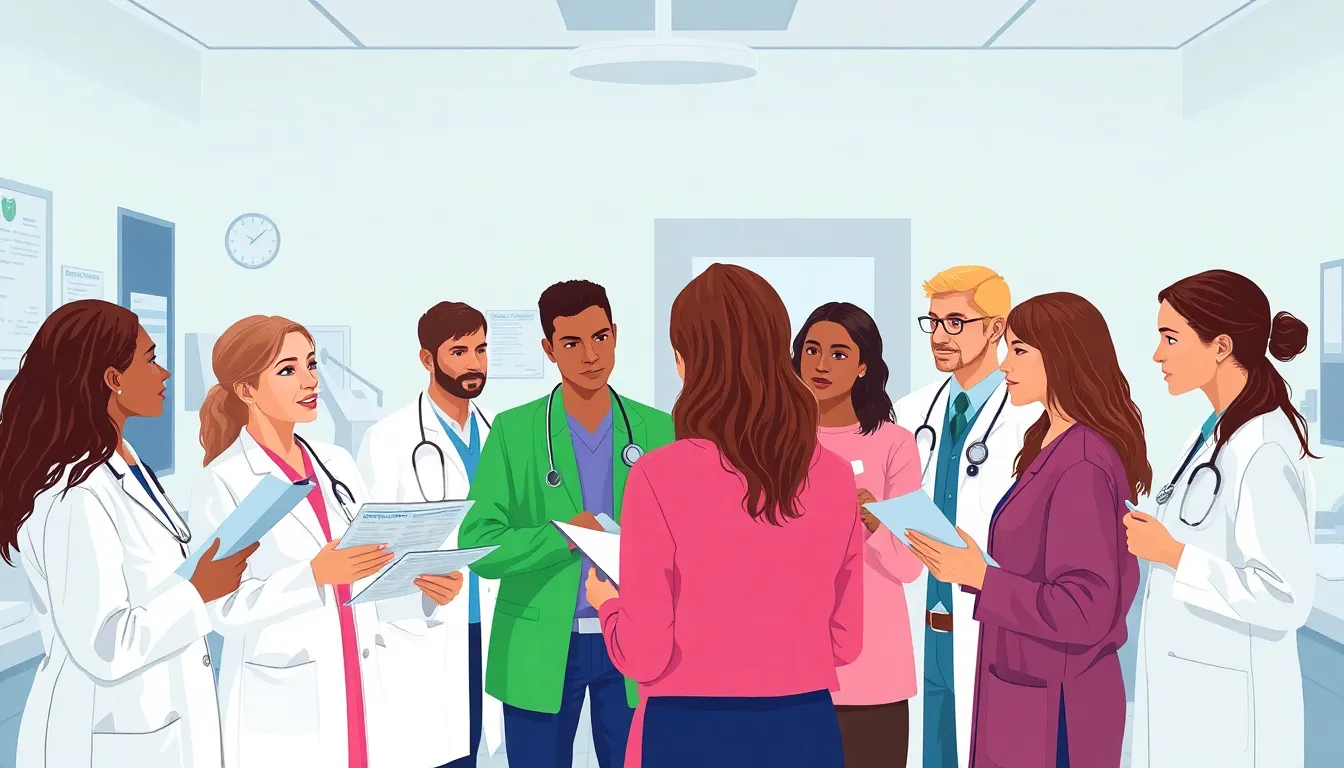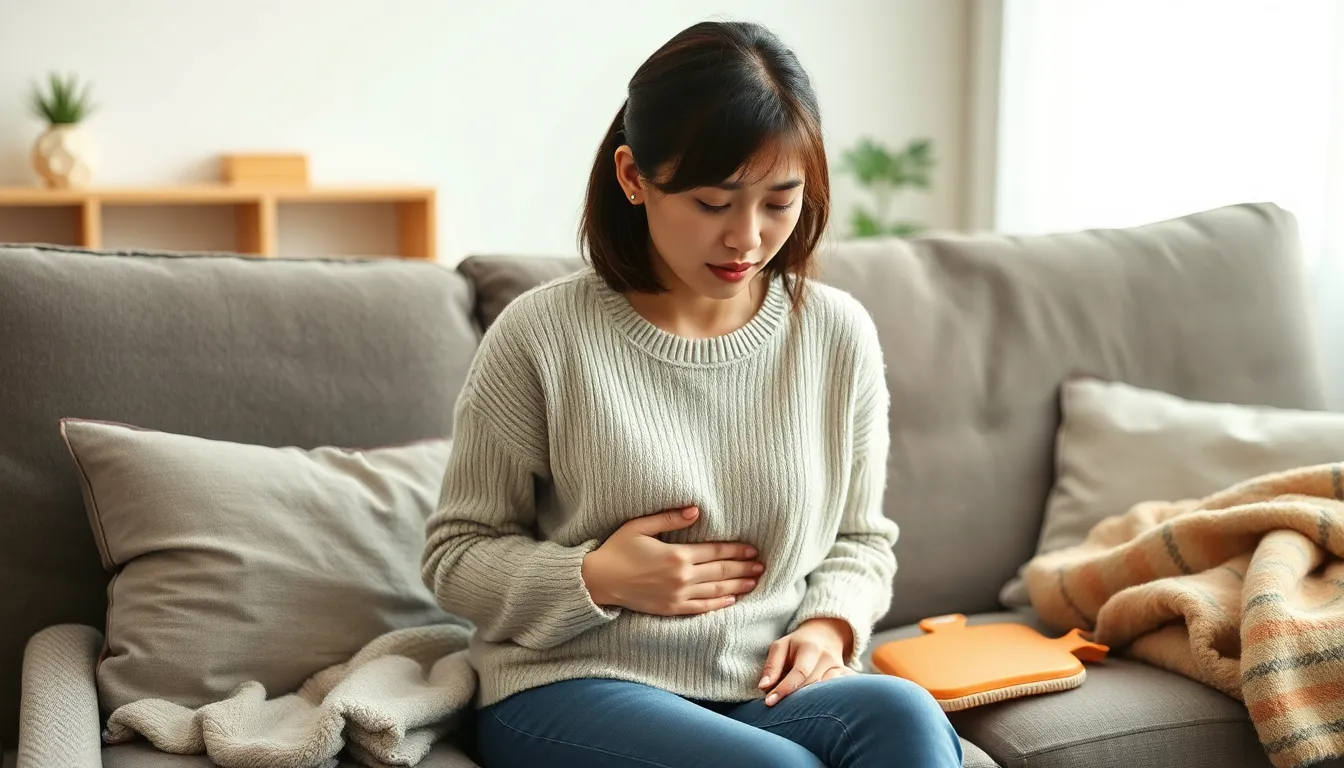Cramps can be a real party crasher, especially when they show up uninvited outside of that time of the month. It’s like your body decided to throw a surprise bash, and the theme is discomfort! If you’ve ever found yourself clutching your abdomen in confusion, wondering why your uterus is throwing a tantrum when it’s not even your period, you’re not alone.
Table of Contents
ToggleUnderstanding Cramps But Not On Period
Cramps outside of menstruation can create confusion and discomfort. Several factors contribute to these occurrences.
Common Causes
Menstrual cramps might originate from conditions like ovulation and implantation. Ovulation-related cramps occur midway through the menstrual cycle, often described as a sharp pain. Endometriosis can also cause cramps, as endometrial tissue grows outside the uterus. Fibroids, which are non-cancerous growths in the uterus, lead to pain and discomfort in some individuals. Pelvic inflammatory disease may bring cramps, resulting from infections in the reproductive organs. Gastrointestinal issues, such as irritable bowel syndrome or constipation, commonly produce cramping sensations. Stress can manifest physically, leading to muscle tension and cramps as well.
Less Common Reasons
Certain medical conditions contribute to cramps occurring outside of the menstrual cycle. Ovarian cysts may lead to cramps when they rupture. An ectopic pregnancy occurs when a fertilized egg implants outside the uterus, causing severe pain. Another potential cause includes pelvic congestion syndrome, which is linked to varicose veins in the pelvis. Conditions like interstitial cystitis can also produce cramps, often accompanied by urinary symptoms. Finally, fibromyalgia might cause widespread pain, including cramps in the abdominal region. Identifying the specific cause will aid in appropriate treatment.
Diagnosing Cramps

Diagnosing cramps that occur outside of menstruation involves a comprehensive approach. Medical professionals often begin with a thorough assessment of medical history.
Medical History Evaluation
Medical history evaluation plays a vital role in identifying potential causes. Practitioners inquire about the individual’s menstrual cycle, sexual activity, and any existing health conditions. A review of past medical issues, such as endometriosis or gastrointestinal disorders, provides critical insights. Details about the nature of the cramps, including intensity and duration, can reveal patterns. Any medications or lifestyle factors are also considered in this stage. Significant factors encompass previous surgeries or family histories of similar issues. Gathering this information assists healthcare providers in forming a clearer picture of possible underlying conditions.
Diagnostic Tests
Diagnostic tests further aid in identifying the source of cramps. Ultrasound imaging can examine ovaries and reproductive organs for abnormalities, like cysts or fibroids. Blood tests might evaluate hormone levels and check for infections. In some cases, urine tests detect urinary tract infections or kidney issues. A pelvic exam enables healthcare providers to assess the reproductive organs for any visible concerns. If gastrointestinal causes are suspected, additional tests such as endoscopy or colonoscopy may occur. Each test contributes essential data that informs diagnosis and subsequent treatment decisions.
Treatment Options
Cramps that occur outside of menstruation may require different treatment approaches based on their underlying causes. Both home remedies and medical interventions offer potential relief.
Home Remedies
Heat therapy serves as an effective home remedy. Applying a heating pad or hot water bottle to the affected area helps relax muscles and alleviate pain. Hydration proves essential; drinking enough water can reduce bloating and cramps. Gentle exercises, such as yoga or stretching, improve circulation and relieve tension. Herbal teas, like chamomile or peppermint, offer soothing properties that can ease discomfort. Dietary adjustments, such as increasing magnesium-rich foods, play a crucial role in managing symptoms.
Medical Interventions
Healthcare professionals may prescribe medication for cramps that persist or are severe. Nonsteroidal anti-inflammatory drugs, like ibuprofen, can reduce inflammation and alleviate pain. Hormonal contraceptives may help regulate menstrual cycles and minimize cramps associated with ovulation or endometriosis. In cases of more serious underlying conditions, such as fibroids or endometriosis, surgical options might be considered. Diagnostic procedures may lead to targeted treatments that address specific health issues. Regular follow-ups ensure ongoing management and adjust treatments as needed.
When To See A Doctor
Experiencing cramps outside of the menstrual cycle can signal underlying health concerns. Recognizing symptoms that warrant medical attention is crucial for effective diagnosis and treatment.
Seek immediate care if cramps are unusually severe. Noticeable swelling in the abdomen or a sudden change in the frequency or intensity of cramps also requires assessment.
Consider contacting a healthcare provider if symptoms accompany fever, nausea, or vomiting. These additional signs can indicate infections or other serious conditions that need evaluation.
Monitor any changes in bowel or urinary habits linked to cramps. Issues like painful urination or changes in stool consistency should prompt consultation with a doctor.
Individuals should prioritize ongoing pain or discomfort lasting several days without relief. Persistent symptoms may suggest conditions that require further examination or intervention.
Evaluate any history of reproductive health issues, such as endometriosis or ovarian cysts. Previous diagnoses can provide important context for current symptoms and guide healthcare professionals in their assessments.
Consult a provider for unexplained or sudden onset of cramps after a missed period. This might indicate a pregnancy-related condition or other reproductive health issues needing attention.
Routine checkups play a vital role in managing reproductive and digestive health. Regular visits allow for early detection of potential problems, leading to better outcomes and overall well-being.
Unexpected cramps outside of menstruation can be puzzling and concerning. Recognizing the various potential causes is crucial for individuals experiencing this discomfort. By understanding these underlying issues and seeking appropriate medical guidance, they can find effective relief and manage their symptoms.
It’s important to prioritize health and well-being by consulting healthcare providers when cramps are severe or accompanied by other alarming symptoms. Taking proactive steps can lead to better outcomes and improved quality of life. Individuals shouldn’t hesitate to reach out for support and explore treatment options tailored to their specific needs.



